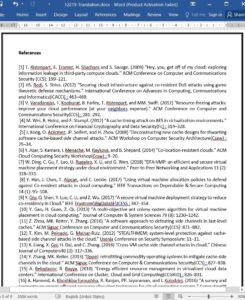Abstract
In the cloud infrastructure, the co-resident attack is a critical security threat. Through virtualization technology provided by Cloud Service Provider, tenants’ virtual machines (VMs) are possible to be allocated on the same host. Multi-tenant environment provides malicious tenants an opportunity to launch the co-resident attack and steal other tenants’ information by side channels. To prevent this type of attack, previous works mostly pay attention to eliminating side channels and few of them study VM deployment strategy. Hence, we focus on deploying VMs with a secure and effective allocation strategy to reduce the probability of VM co-residence. A novel VM allocation strategy is proposed with three optimization objectives including security, load balancing and energy consumption. Finally, we implement our VM allocation strategy and prove its effectiveness on the simulation platform CloudSim.
1. Introduction
Cloud Service Providers (CSPs) such as Google, Amazon and Alibaba are developing their cloud platforms. Tenants have a chance to reduce their IT cost through this technology because they can pay only for the resources used at any time and any place.
In the IaaS layer, CSPs usually create multiple virtual machines (VMs) on a single host for different tenants. In this way, they can maximize the resources utilization and increase revenue. Yet, this also brings a new security threat. In 2009, Thomas et al. [1] first proposed the concept of VM co-resident attack, which also brings a series of security problems: reducing the resources availability [2], making victim VMs free up resources [3], and stealing private information [4].











